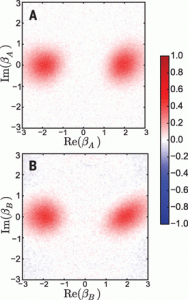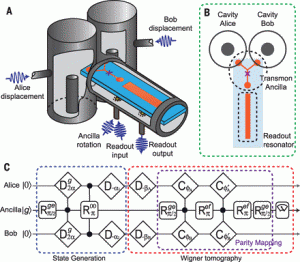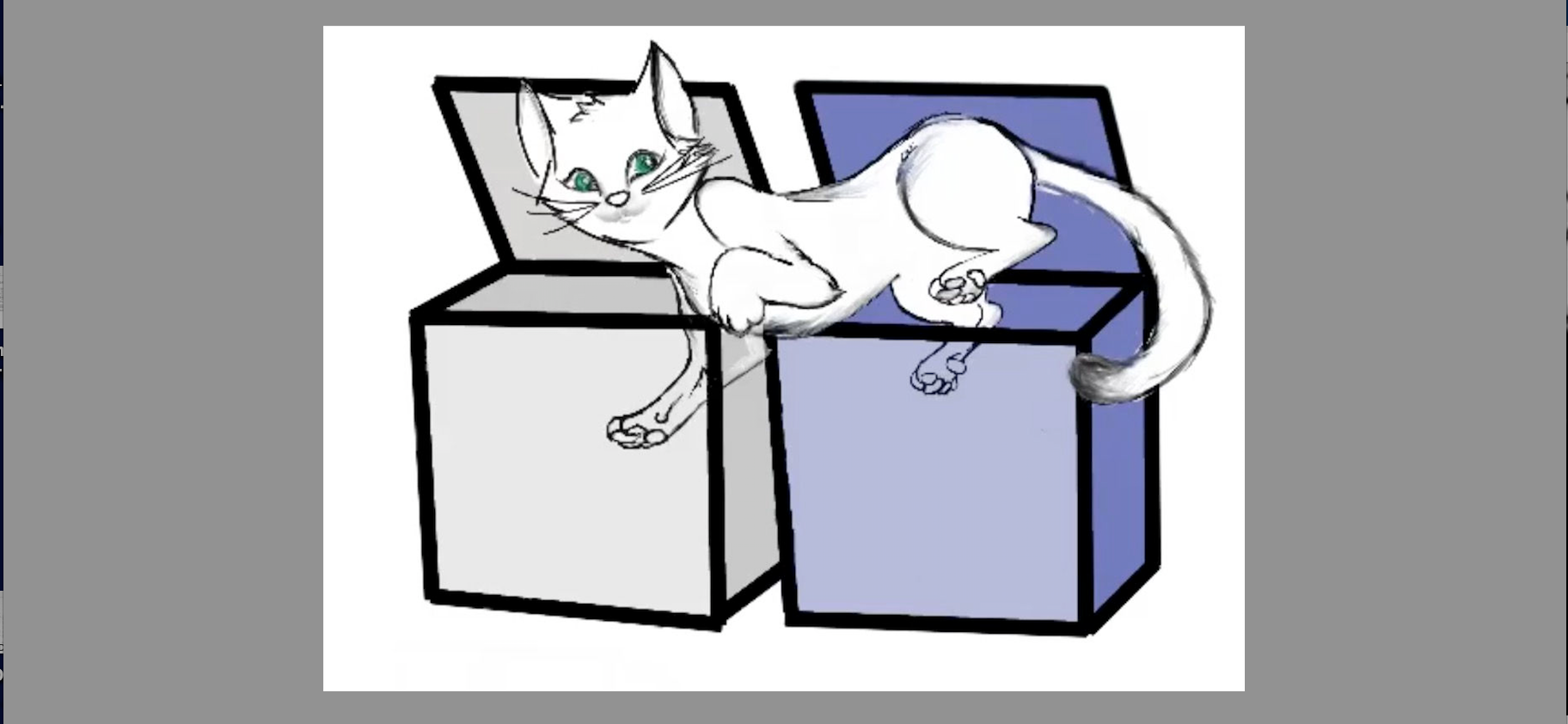Strange but true: according to Yale physicists, the frontier of modern computing rests in the fate of one formidable feline.
In the spring of 2016, scientists at Yale’s Quantum Institute doubled down on Schrodinger’s cat to lay critical groundwork for quantum computation. A now-famous thought experiment, Erwin Schrodinger’s original paradox articulates a puzzling feature of the quantum world called “superposition.” While objects in classical physics — from planets to pulleys — inhabit singular states, quantum information exists as a sort of dynamic combination of multiple states, all “superposed” together. A cat in a box can be both alive and dead.

For physicists at Yale, however, one box just wasn’t enough. As part of an ongoing effort to advance quantum information processing, Yale’s team developed a two-cavity cat state. In the process, they were able to mine their experiment for insights into another thorny quantum phenomenon known as “entanglement.”
“Think of [entanglement] as an ultra-strong correlation that enables quantum communication,” said Liang Jiang, an assistant professor of Physics and Applied Physics at Yale and co-author of the culminating Science Magazine paper. The article spotlights a groundbreaking idea: take two quantum cat-states, connect them remotely via entanglement, and invent a complex, two-cavity quantum system. Experimentally, the role of each “cat” is played by microwave light, and “life” and “death” roughly correlate to the direction of an electromagnetic field. Researchers can then interpret the two cats, coupled by entanglement, as one fundamental cat unit that lives (and dies) in two boxes at once.
On a technical level alone, the study marked a milestone. “It’s perhaps the first meaningful, nontrivial example of entanglement we’ve achieved,” Jiang said. Yvonne Gao, a fifth-year physics doctoral student and one of the paper’s primary authors, concurred. Quantum information is notoriously difficult to contain, and often “de-coheres” when disrupted, settling into a classical state. In the laboratory, this means achieving and maintaining cat-states is no easy matter: an even slightly disturbed cat is a “de-cohered” one, alive or dead but not both. To navigate these complexities, Yale researchers had to design innovative new technology. “We used hardware very carefully engineered to extend the lifetime of quantum information,” Gao stated. “It’s powerful as a component of future research.”

But even more significantly, the Yale team’s findings promise to invigorate quantum computing, a revolution-in-the-works that could reshape every facet of science, from RSA encryption to the modeling of complex molecules. “Intuitively, quantum systems have some parallelism, due to superposition, so that a computer could explore many possibilities simultaneously,” Jiang explained. Algorithms of great complexity could run quickly and effectively, sweeping through potential inputs in record-breaking time. If harnessed, this computational dynamism could generate radically new methods in cryptography, arithmetic, and biomedical engineering, transforming the world as we know it.
Twinning Schrodinger’s cat is just the first step. As Jiang surveyed a white-board strewn with equations, he looked towards the future. “Potentially, multiple cavities connected by entanglement would allow you to implement quantum [circuits] between remote locations,” Jiang stated, thereby expanding the quantum communication of information. The age of the quantum computer — and the cat-states that guide it — may well be on its way.

